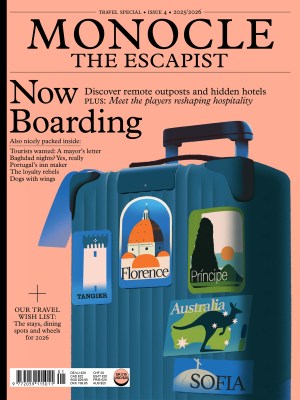Interview: Design Week South Africa curator Zanele Kumalo
Insight into the event highlighting the immense talent behind the country’s home-grown industry.
Zanele Kumalo is the curator of Design Week South Africa, a celebration of design that takes place every October across Johannesburg and Cape Town. Here, we talk to Kumalo about providing a platform for African creatives, increasing access and growing in influence.

Why did you decide to get involved in Design Week South Africa?
When I worked in magazines I always tried to amplify voices that weren’t given space. [Now] what drives me is helping young creatives find a firmer footing in places where they haven’t had access. There’s such a wealth of talent in this country, so highlighting creatives makes me happy.
How will Design Week affect the design scene in South Africa?
What’s interesting about this design week is that there’s no barrier to entry, [whereas other] expos usually ask exhibitors to outlay some money to exhibit in a booth. People can [also] enjoy design in a place that feels more accessible. Instead of walking into one space, it’s spread across the city, so it presents a different kind of opportunity for the regular person on the street – you might walk into a restaurant and there’s a pop-up or panel discussion. It’s also an opportunity to amplify and give [designers] a greater platform to share their brand internationally and create more sales.
Tell us more about the curation and how you select designers.
The first iteration of Design Week happened quite quickly, so it was a general call-out from myself, Margot Molyneux [founder] and Roland Postma [curator]. We leaned on established names but we also relied on some of the newer players to feed us inspiration. This year we want to be a little more transparent. We want to ensure that there’s no room for anyone to doubt how we are doing things and that we might be favouring certain entities. We also want to be a little more inclusive, so we are working out ways we can create a larger panel or board to help ensure that we cover all the bases and that our discovery is more broadly set.
We want to be the authority on design and our point of difference will be the nurture aspect: supporting emerging talent, while still highlighting the bigger players. For our curation, it’s really important to bring new voices to the forefront. There are so many exciting ventures happening [around the country] and we want to give them the space to turn those ideas into sustainable projects. To do this, we also provide financial or project-management support. Other [design fairs] expect brands to pay fees that can be limiting and cut down access. There’s so much potential; we just need to highlight it.
What do you think sets South African design apart?
The biggest things are our points of view and philosophy of design, which I think [non-South Africans] are always on the lookout for. South Africa has multiple cultures and a lot of untold stories that have been buried, which are now being rediscovered through design. People from different cultures are also collaborating: they’re mixing a foreign design principle with things that are completely unique [to South Africa] and rediscovering what it means to be South African, which is layered and varied.
Why is there such good design coming out of South Africa?
Good design has always been coming out of the country but now there’s a greater spotlight on it, probably because of initiatives such as Cape Town Furniture Week and 100% Design. We’re also constantly discovering [new designers]. A lot of smaller design companies are underreported – it has taken growing initiatives and design platforms to spotlight these makers. Previously, South Africans always looked everywhere else for validation but we’re starting to appreciate what’s happening inside our own country. There’s a deeper pride in what we produce and we’re realising that it’s of the same quality as items being produced elsewhere. While we gain validation when our design is featured around the world, there’s a lot of internal validation happening too.
What are your ambitions for the show?
We don’t just want it to be an annual event. We’d like to keep it running over the course of the year, whether that means supporting smaller projects or highlighting what’s happening around the country. The event won’t be a thing that happens in isolation. I want to make sure that we have a panel of people who could take Design Week to a pan-African or even international level. It would be great to have that recognition. We don’t necessarily want to grow in scale but grow in impact. We’d also like to plug into the rest of Africa, such as Design Week in Lagos or Accra. While we still want to keep it local, we’d like to reach out to a more global network too. The opportunities are endless.
Do you think it has the capacity to become an event that draws people from around the world, like Salone del Mobile?
It would be interesting to see whether we could attract people from all over the world. But we’ll always make sure that, above all, we are supporting all of these South African voices.


